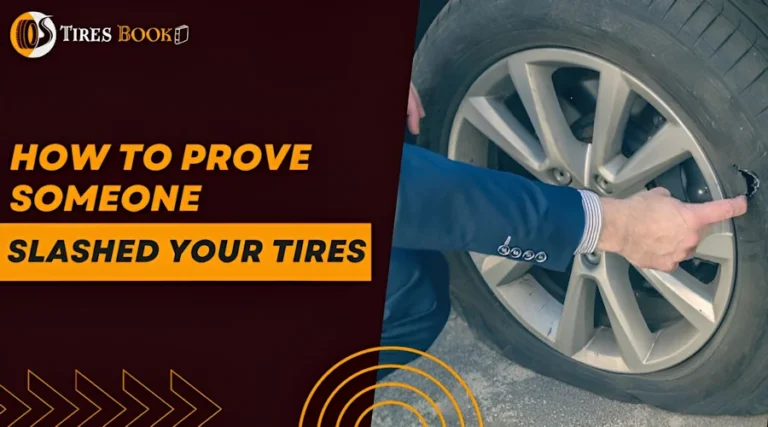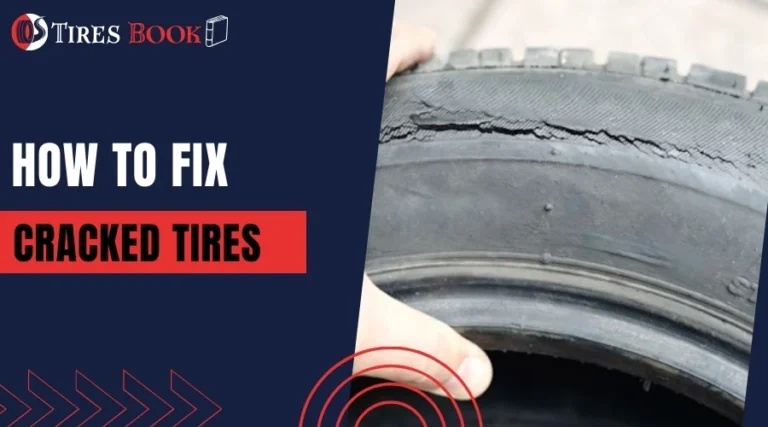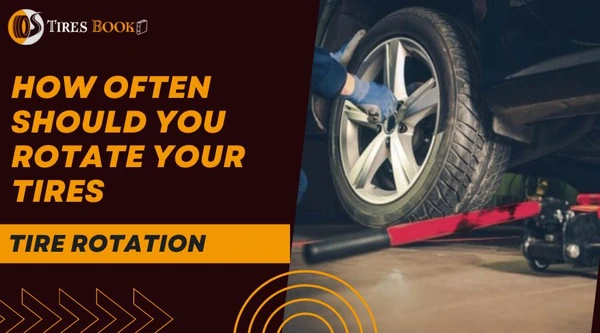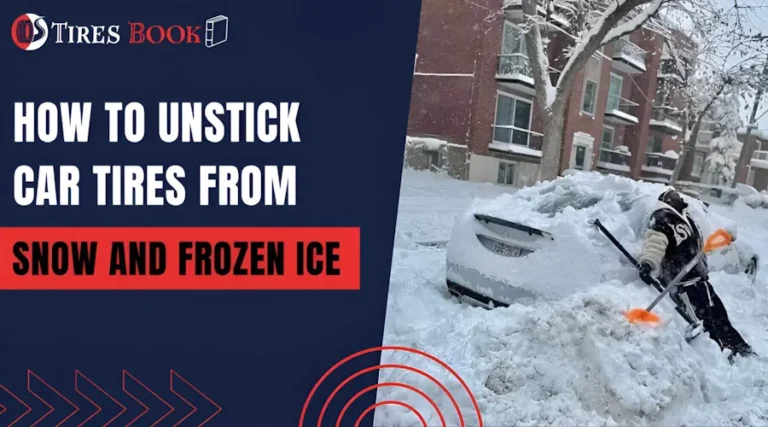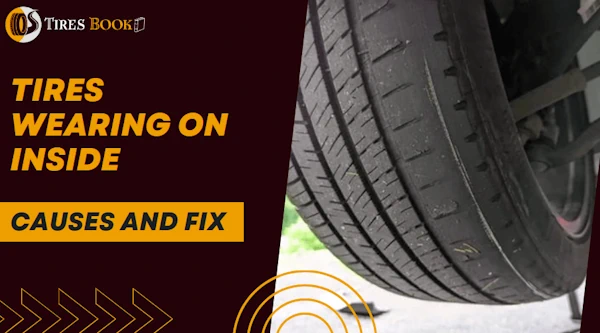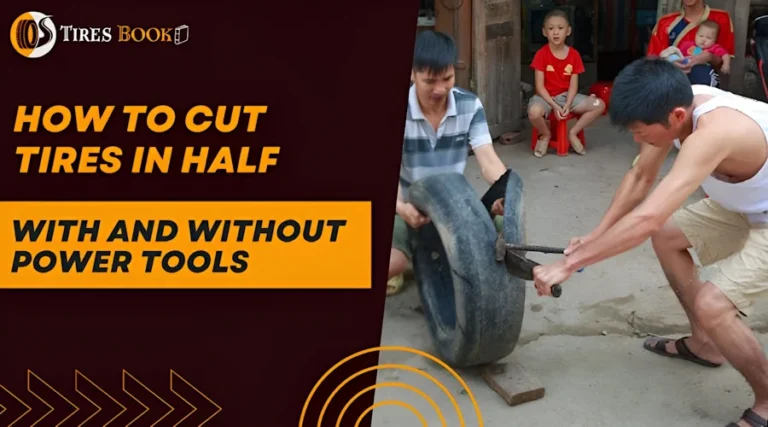Key Points
- Tire maintenance is crucial for a safe and enjoyable road trip. Make sure the tires are in good condition.
- Regular inspection of tire pressure, tread, and signs of wear is necessary.
- Proper wheel alignment and rotation play a significant role in tire performance and longevity.
Heading out on a long road trip can be an exciting adventure, but it’s essential to take care of your vehicle before you hit the road, especially when it comes to tire maintenance. The condition of your tires plays a crucial role in ensuring your safety and maximizing the efficiency of your vehicle.
By taking the time to inspect and maintain your tires, you can avoid unwelcome surprises, minimize the risk of accidents, and ensure a smooth and comfortable journey.
There’s more to tire maintenance than just pumping air into your tires. Proper tire care involves checking the tire pressure, inspecting the tread for wear, identifying signs of uneven wear, and understanding the importance of wheel alignment and tire rotation.
By being mindful of these factors, you can extend the life of your tires, improve your fuel economy, and ensure your vehicle’s optimum performance throughout your trip.
Table of Contents
Understanding the Importance of Tire Maintenance
Tire maintenance is crucial to ensure not only your safety but also optimize the performance of your vehicle. So, why is it so important to maintain your tires before a long trip?
Firstly, safety. Having well-maintained tires greatly reduces the risk of accidents, especially in wet conditions, as it directly affects the vehicle’s handling and braking. A simple inspection can save you from potential hazards on the road.
Secondly, performance. When your tires are properly inflated and in good condition, your car performs at its best. This includes better fuel economy and a smoother ride for you and your passengers.
Lastly, vehicle safety. Regular tire maintenance safeguards your car’s performance. For example, driving on severely under-inflated tires can cause heat build-up, leading to premature failure.
Below are some critical tire maintenance tips you should consider before heading on a long journey.
1. Checking Tire Pressure
Understanding Tire Pressure Gauge Ratings
When preparing for a long trip, it’s essential to check your tire air pressure. First, you need to understand the tire pressure gauge ratings. Most gauges measure pressure in pounds per square inch (psi). Ensuring your tires are within the recommended range is critical for safety and fuel economy.
To check your tire pressure, you can use a manual gauge, which is a small, handheld device that gives an instant reading when pressed onto the valve stem.
Did you know that properly inflated tires can improve your vehicle’s fuel efficiency? underinflated tires can lead to a 0.4% drop in mileage for each pound per square inch (1 psi) your tires are low. Checking and adjusting your tire pressure before a long road trip ensures a smooth ride, handling, and improved fuel economy.
Manual Versus TPMS Monitoring
Alternatively, your vehicle might have a Tire Pressure Monitoring System (TPMS). If equipped with TPMS, you’ll see a light on your dashboard that alerts you to underinflated or overinflated tires. Keep in mind that TPMS is not a replacement for manual tire pressure checks – it’s essential to verify your tire pressure with a tire gauge before long trips.
By regularly monitoring your tire pressure, you’ll avoid the dangers of underinflated and overinflated tires, ensuring a safe and fuel-efficient journey.
2. Tire Tread Inspection
One crucial aspect of tire maintenance before a long trip is inspecting your tire tread. Proper tire tread is essential for maintaining good traction and preventing hydroplaning. Let’s explore two popular methods to check your tire tread depth.
The Penny Test
A simple and commonly used technique is the penny test. To perform this test, take a penny and insert it into various points of the tire’s tread, with Abraham Lincoln’s head facing down. If you can see the top of Lincoln’s head at any point, it indicates the tread depth is below 2/32 inches, which means it’s time to replace the tire.
Using a Tread Depth Gauge
For a more precise measurement, you can use a tread depth gauge. These affordable devices can be found at most auto parts stores. To use the gauge, simply insert the probe into the tire’s tread, press the shoulders of the gauge flat against the tread, and read the measurement. A tread depth of 2/32 inches or less indicates that you should replace your tire.
Remember to check your tire tread at various points across the tire to ensure even tread wear. Uneven tire wear may point to alignment issues that need attention before embarking on your long trip.
3. Identifying Signs of Uneven Wear
Did you know that uneven tread wear on your tires can be a crucial factor impacting your safety on a long trip? Let me share how to identify this issue and what it might indicate.
First things first, examine your tires closely. If you notice the inner or outer edge wearing down faster than the rest of the tread, it’s a sign of misaligned wheels.
Another telltale sign of uneven wear is when it appears across the width of the tire. Uneven wear on the front or rear can be incredibly frustrating, as tires are costly items and critical components of your vehicle’s suspension.
Remember, the key to a safe and enjoyable road trip starts with well-maintained tires. Check for uneven wear before hitting the road, and schedule any necessary adjustments to ensure your vehicle is in tip-top shape for the journey ahead.
4. The Necessity of Wheel Alignment
Ever wondered why wheel alignment is crucial for your tires, especially before a long trip? Well, allow me to explain the importance of this often-overlooked aspect. Aligning your wheels ensures your vehicle’s suspension and steering components perform in harmony. Misaligned wheels put undue stress on your tires and negatively affect their wear and performance.
Starting to see the importance of wheel alignment? Great! Let’s talk about how to identify alignment issues. When you’re out for a drive, pay attention to your steering wheel’s behavior. If your vehicle consistently drifts to one side or if there’s excessive vibration in the steering wheel, chances are your wheels need alignment. Properly aligned wheels promote even tire wear, improve handling, and enhance fuel efficiency.
So, next time you’re preparing for a long journey, don’t forget to include wheel alignment in your tire maintenance checklist. It’s a surefire way to ensure a smooth, safe ride, and take care of your tires in the long run.
5. The Importance of Tire Rotation
So, you’re planning a long trip, and I bet you’re excited. But wait, have you checked your tire rotations? If not, let’s talk about why it’s crucial for your journey.
Tire rotation is the process of repositioning your vehicle’s tires in specific patterns from front to back or side to side. This simple yet essential step enhances your tire’s life and ensures your safety on the road. Trust me; you don’t want any unpleasant surprises during your trip.
Why does tire rotation matter? Well, it promotes even tire wear, ensuring a smooth and comfortable drive. Regularly scheduled tire rotations are recommended by vehicle manufacturers, so make sure you’re not skipping this vital maintenance.
Now that you know the importance of tire rotations, don’t forget to rotate your tires before hitting the road. If you recently rotated your tires there is no need to do that again. Tire rotation is only needed after 5,000-7,000 miles.
6. Understanding Tire Types and Their Role
I will keep this section brief, but engaging. So, you’re planning a long road trip, but do you know the importance of choosing the right tires for your journey? Don’t worry, I’ll quickly walk you through it!
New tires are ideal for maximum performance, but more importantly, make sure you have the proper type of tires for your trip. Going on an adventure to Alaska? Then, winter tires are your best bet, as they’re designed for cold temperatures and icy roads.
For all other seasonal conditions, all-season tires are a great option. They offer good traction on both wet and dry surfaces and are perfect for most drivers. But if you’re heading off-road, consider all-terrain tires. These tires are designed to handle challenging terrains like mud, sand, and rocks.
Lastly, for added peace of mind during your trip, you may look into run-flat tires. These tires enable you to continue driving even with a puncture at reduced speeds and for a limited distance, allowing you to reach a safe place or repair shop.
7. Spotting Signs of Tire Damage
Are you aware of the subtle signs that your tires could be hiding potential damage? Before you embark on that long-awaited road trip, take a moment to inspect your tires and avoid sudden tire failure.
Have you checked for sidewall bulges? Large, noticeable bulges on your tire’s sidewall may indicate a weak spot, putting you at risk for a blowout. Keep an eye out for splits, bumps, or leaks which can be indications of an impending flat tire.
Examine your tires for any visible bumps, deep cracks, or splits. These splits may reveal damage to your tire’s inner layers, potentially compromising its structural integrity. Also, don’t forget to inspect for small punctures, as they can allow air to gradually leak out, leading to a slow flat tire over time.
Remember, spotting these signs of tire damage early can save you from experiencing unexpected tire failure on your journey, ensuring a safe and enjoyable trip. So go ahead, and give your tires a thorough once-over – they’ll thank you for it.
8. The Role of Spare Tires
Did you know the spare tire plays a crucial role in long trips? Yes, it’s essential to inspect your spare tire before hitting the road. Why? Well, a well-maintained spare can save you from a lot of hassle in case of a flat tire.
First, let’s talk about the spare tire’s pressure. In an ideal world, you should check your spare’s pressure every month, including before a long trip. Remember, proper tire pressure can prevent accidents and unexpected delays on your journey.
Apart from pressure, never overlook possible visible issues with your spare tire. Inspecting your spare for any physical damage or wear can make all the difference during a sudden need in your trip. After all, prevention is better than cure.
9. Ensuring Proper Vehicle Load
Embarking on a long trip? I can’t stress enough the importance of avoiding an excessive load on your vehicle. Overloading puts unnecessary strain on your tires and can pose safety risks on the road.
First, check your vehicle’s owner’s manual for the maximum weight recommendation. You don’t want to exceed this limit, as doing so could lead to tire damage or even a blowout. Distribute the weight inside your car evenly to balance the pressure on all four tires. This helps maintain proper handling and prevents excessive wear on specific tires.
Moreover, consider the extra weight added by rooftop cargo carriers or trailers. Be sure to account for this added load when calculating your vehicle’s overall weight. Pay special attention to tire pressure, as improper inflation can become a hazard when carrying a heavy load.
By being mindful of these factors, you can ensure your vehicle stays within its weight limits and provides a safer, more comfortable trip. Remember to avoid overloading and properly manage your vehicle’s load for optimal performance and tire longevity.
Some Car and Tire Safety Checks Before Trips to Cold Regions Like Alaska
Are you planning a trip to cold regions like Alaska? It’s essential to ensure your car is prepared for the journey, especially in winter. Here are some tips to help you stay safe on your adventure.
- Tire Pressure: Did you know that air temperature can affect tire pressure? At low temperatures, air inside the tire contracts leading to low pressure. It is advisable to inflate the tires 2-4 psi more than the normal recommended pressure when driving in low or freezing temperatures.
- Radiator Water: Top off your fluids, including radiator water and windshield washer fluid. The former is especially crucial because the freezing temperatures in cold regions can cause the coolant to freeze without adequate antifreeze.
- Battery: Cold temperatures can impact your battery’s performance. Inspect the battery by checking its connections and ensuring it is fully charged.
- Exhaust Pipe: Another aspect that may be overlooked is the risk of carbon monoxide poisoning. Make sure your exhaust pipe is clear of any snow and avoid running your car with the windows up for long periods.
Other Car Maintenance Checks Before a Long Road Trip
Besides checking your tires, there are a few other car maintenance tasks that are crucial for a safe and enjoyable journey. Don’t worry; most of these checks can be done by yourself or a skilled friend, but if you’re in doubt, consult your mechanic or vehicle manufacturer.
Fluid Level Checks
Before hitting the road, always make sure your car fluids are at optimal levels. Trust me, you don’t want to run low on these during your trip:
- Motor oil: Your engine’s lifeblood. A timely oil change can save you from bigger issues later on.
- Transmission fluid: This helps keep your gears in harmony. Double-check that it’s clean and at the right level.
- Power steering fluid: This ensures smooth steering, so make sure it’s topped off.
- Brake fluid: Safety first! Keep an eye on this important fluid to enable your brakes to function properly.
Brakes and Lights Inspection
This may seem like a no-brainer, but it’s key: make sure your brakes and lights work correctly before departing on your trip. You need those brakes to be sharp and responsive during unexpected events, and your lights should be bright enough to let other drivers know your intentions. Just follow these simple steps:
- Test all the lights, including headlights, taillights, brake lights, and turn signals.
- Check the brake pedal for firmness and responsiveness. If it feels squishy or lacks grip, have it inspected by a professional.
- Examine brake pads and rotors for wear or damage.
Some Other Car Checks
- Bring towels for cleaning dirty windshields, spills, etc.
- Ensure your tire iron and jack are in the car.
- Get an extra set of spark plugs.
- Check the cabin air filter because you don’t want a musty odor coming from your vents.
- Make sure your owner’s manual is with you.
- Secure a spare car key and keep it in your wallet or elsewhere on your person in case you lock your keys in the car.
- Pack a fire extinguisher.
- Replace the air filter. If you recently changed it, there is no need to do it again.
- Fix sun protectors for side windows and front windshield.
- Carry a water bucket in case you need to use a river or lake for emergency coolant.
Final Thoughts
So, you’re planning a family road trip, perhaps to the beautiful landscapes of Alaska? I know the excitement is building, but don’t let it overshadow the importance of tire maintenance. Trust me, taking the time to perform a tire check can save you money and headaches during your journey.
Remember, your tires are the heart of your vehicle, and their condition affects your ride, handling, and safety. The investment of time and attention will undoubtedly pay off in spades, ensuring a smoother, safer, and more enjoyable road trip for you and your family.

